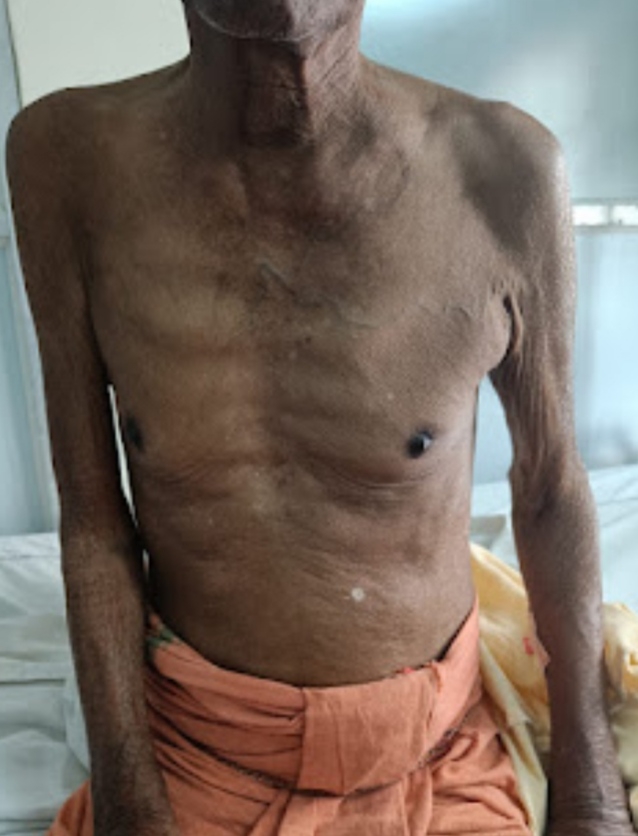33 year old female with weakness in left upper limb
MEDICINE E LOG BOOK
“This is an online e log book to discuss our patient’s de- identified health data shared after taking his/her/guardian’s signed informed consent. Here we discuss our individual patient’s problems through series of inputs from available global online community of experts with an aim to solve those patient’s clinical problems with collective current best evidence based inputs. This e-log book reflects my patient centered online portfolio and your valuable inputs on the comments is welcome.”
January 04, 2022
33 YEARS OLD FEMALE WITH WEAKNESS IN THE LEFT UPPER LIMB
A 33 years old female , shopkeeper by occupation, hailing from Nalgonda, came to the GM OPD with chief complaints of :
- Deviation of mouth to right side
- Weakness of Left Upper Limb
4 days ago
History of present illness: As she was coming out of her washroom she was unable to use her left upper limb followed by which she developed deviation of mouth to the right side. It was associated with drooling of saliva from the right angle of mouth. She also developed parasthesia over face and left upper limb.Her symptoms are improving gradually. She was initially aphasic but now she is able to speak. She also c/o fine tremors in right hand fingers since morning (on 31/12/21).
She was admitted in KIMS, Narketpally 1 month back for Acute GE with polyarthralgia with hypoproliferative marrow.
- No c/o headache.
‐ No c/o nausea.
- No c/o fever.
- No c/o vomitings.
Link to the blog when she was admitted for the first time is given as follows-
Past history: She is a k/c/o arthritis on medication since 2 months.
The patient also had history of a ruptured sebaceous cyst on the left thigh 1 month back.
Not a k/c/o DM, HTN, TB, Epilepsy, asthma, CAD.
Past surgical history : Tubectomy done 10 years ago .
Family history: Patient's mother is a known case of diabetes and hypertension since 10 years .
Personal history:
Diet - mixed
Appetite - decreased since 2 months
Bowel and Bladder movements - regular
Sleep - adequate
No addictions
Obstetric history :
Age of marriage - 18
Obstrectic score ‐ G2P2L2A0
General examination: Patient is conscious,
coherent,cooperative ,thin built and poorly nourished.
Deviation of mouth to right side.
Nasolabial fold on left side absent.
Frowning present.
Mild pallor present.
No icterus, cyanosis, clubbing, generalised lymphadenopathy, pedal edema.
Vitals:
Pulse rate - 80 bpm
Temperature- 98.2 degree Fahrenheit
RR - 15 cpm
BP - 100/80 mmHg
Systemic examination :
CVS : S1 , S2 heard, no murmurs
RS :BAE + ,NVBS heard
P/A :soft , non tender ,no organomegaly ,no distension ,bowel sounds heard
CNS:
GCS- E4V5M6
Pupils- B/L dilated, reacting to light
Tone- Rt. Lt.
UL N N
LL N N
Power-
UL 5/5 4/5
LL 5/5 5/5
Reflexes-
Biceps‐ + +
Triceps‐ + +
Supinator‐ + +
Knee‐ + +
Ankle‐ + +
Hand grip‐ 100% 30%
Investigations:
Treatment:
Provisional diagnosis ‐
CVA WITH LEFT UPPER LIMB MONOPARESIS WITH ACUTE INFARCT IN THE RIGHT PARIETAL LOBE.
SECONDARY TO SLE VASCULITIS.
DISCUSSION:
Systemic lupus erythematosus (SLE) is an autoimmune disease in which the immune system attacks its own tissues, causing widespread inflammation and tissue damage in the affected organs. It can affect the joints, skin, brain, lungs, kidneys, and blood vessels. There is no cure for lupus, but medical interventions and lifestyle changes can help control it.
In this patient , stroke has occurred secondary to SLE vasculitis. The main pathophysiological process is autoantibody binding to brain endothelial cell antigens that induces an endothelial activation eventually responsible for the vasculitis.
The SLEDAI is a global index that measures disease activity within the last 10 days. It includes 24 clinical and laboratory variables that are weighted by the type of manifestation, but not by severity.
SLEDAI ‐ 2K CLINICAL CRITERIA FOR THE DIAGNOSIS OF SLE :
Activity categories have been defined on the basis of SLEDAI scores: no activity (SLEDAI=0), mild activity (SLEDAI=1 to 5), moderate activity (SLEDAI=6 to 10), high activity (SLEDAI=11 to 19), and very high activity (SLEDAI≥20).
CLINICAL TRIAL :















Comments
Post a Comment